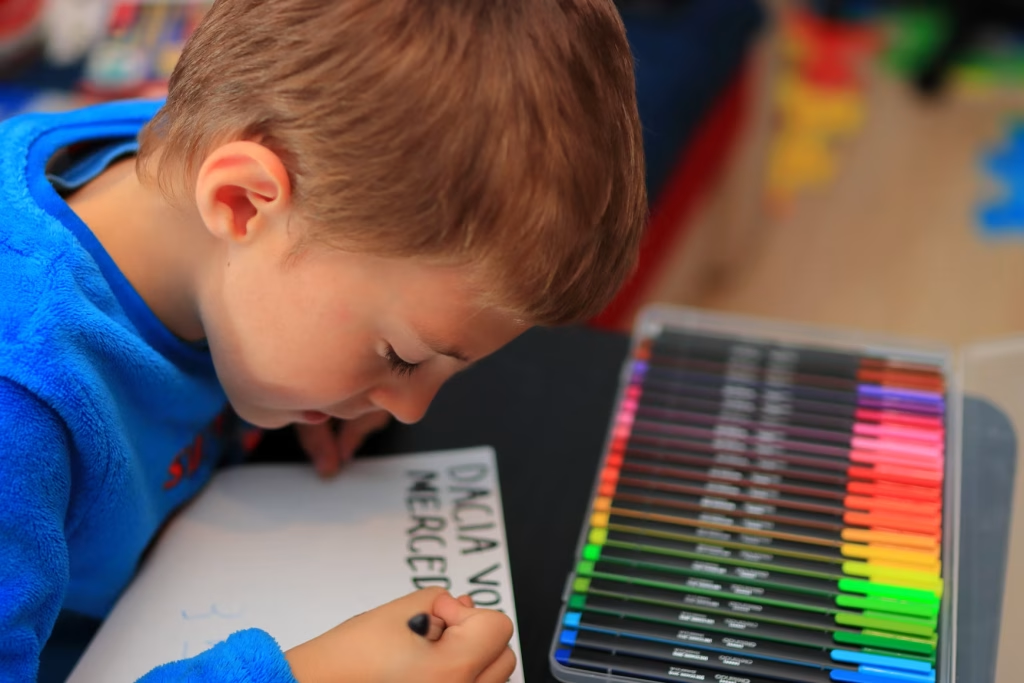
Picture this: your child just had a meltdown over a broken crayon. Again. You’re exhausted, frustrated, and wondering if it’s “just a phase” or something deeper. These messy, confusing moments are actually where emotional intelligence begins. While it’s easy to dismiss them as minor hurdles, nurturing emotional intelligence early on creates lifelong advantages for your child’s happiness, well-being, and overall development.
At its core, emotional intelligence isn’t just “being in touch with feelings.” It’s about recognizing, understanding, and managing emotions—then applying that understanding to navigate relationships, choices, and challenges. Kids who develop these skills learn to stay calm under pressure, connect better with others, and adapt more easily as they grow. Here’s why it’s worth focusing on at home.
1. Emotional Intelligence Builds Better Relationships
Children who understand their own emotions—and can tune into the feelings of others—tend to be kinder, more adaptable, and better team players. When they recognize signals of anger, happiness, or sadness, they can respond empathetically instead of shutting down or lashing out.
According to insights from the All for Kids Blog and the BBM Academy Blog, emotionally intelligent kids are less likely to engage in conflicts and more likely to form stronger bonds—both in friendship circles and later in life. These empathy-driven connections become a bedrock for healthier interactions at school, at home, and eventually in the workplace.
2. Emotionally Intelligent Kids Perform Better Academically
Classrooms aren’t just for mastering math facts and spelling lists. They’re also environments where social dynamics, stress, and resilience come into play every day.
As noted by Youth Education Development, children with high emotional intelligence typically cope better with academic pressures. They’re also more collaborative in group activities and stay motivated through setbacks. By learning to handle frustration or disappointment, kids keep their focus on learning rather than getting sidetracked by emotional turmoil. In many cases, building emotional skills can be just as beneficial as any extra tutoring session.
3. You’re Their First Emotion Coach
Before kids learn about feelings in storybooks or from a school counselor, they observe you. That meltdown over a broken crayon isn’t just an annoyance—it’s a teaching moment.
The Peaceful Parent points out that parents who serve as “emotion coaches” help children name and validate what they feel, offering calming strategies instead of punishment or dismissal. By recognizing your child’s feelings—“I see you’re sad right now. It’s okay to feel that way”—you reinforce that emotions aren’t scary or bad, they’re signals that help us understand ourselves. In these moments, you’re laying the groundwork for how your child will handle feelings throughout life.
4. Strong Emotional Skills Protect Mental Health
Children with the tools to process difficult emotions like sadness, anger, or anxiety are more likely to maintain better mental well-being as they grow. Emotional intelligence doesn’t magically eliminate challenges, but it does give kids healthy ways to cope.
Both Youth Education Development and All for Kids highlight how emotionally literate children show fewer signs of depression, anxiety, or behavioral issues. By identifying what they’re feeling, children can better articulate their needs, seek help when necessary, and bounce back from setbacks. That emotional resilience becomes a safeguard for their future well-being.
5. Early Childhood = Prime Time for Emotional Development
A child’s early years lay the groundwork for how they’ll respond to stress, manage relationships, and adapt to change later in life.
As emphasized by the BBM Academy Blog and a recent IJTRD research paper, guiding kids through emotional milestones from a young age helps them build strong emotional habits that last into adolescence and adulthood. When toddlers learn to name their feelings—“I’m frustrated,” “I’m excited,” “I’m scared”—they’re practicing crucial self-awareness. Don’t underestimate how much children absorb from simply observing how you handle your own feelings and conflicts.

Strengthening Emotional Skills in Everyday Moments
Raising an emotionally intelligent child doesn’t require fancy apps or expensive materials. Some of the best learning happens in routine activities—like a conversation during snack time or a reflective question after a sibling argument.
- Talk about your own emotions: “I’m feeling a bit stressed today, so I’m going to take a quick walk outside.”
- Read stories featuring different feelings, and ask how the characters might feel or respond.
Validate any emotion (anger, sadness, excitement) as normal and worth discussing.
Small, consistent efforts help kids build a confident “emotional toolbox” they can tap into throughout life.
Emotional Intelligence Isn’t a Luxury—It’s a Lifeline
Ultimately, emotional intelligence is less about raising “nice kids” and more about equipping them with practical, lifelong skills. Children who can understand and manage their feelings often experience stronger relationships, academic success, and better mental health. In an increasingly complex world, teaching them to pause, reflect, and respond thoughtfully can be one of the greatest gifts a parent can give.
So the next time your child’s reaction seems over-the-top, consider it a chance to build emotional muscles. Those moments of upset might feel big now, but they can translate into calm confidence down the road.
How do you help your child recognize and express their emotions? Share your go-to tips or challenges in the comments below—we’d love to learn from your experiences.
Read More

Samantha Warren is a holistic marketing strategist with 8+ years of experience partnering with startups, Fortune 500 companies, and everything in between. With an entrepreneurial mindset, she excels at shaping brand narratives through data-driven, creative content. When she’s not working, Samantha loves to travel and draws inspiration from her trips to Thailand, Spain, Costa Rica, and beyond.
Leave a Reply